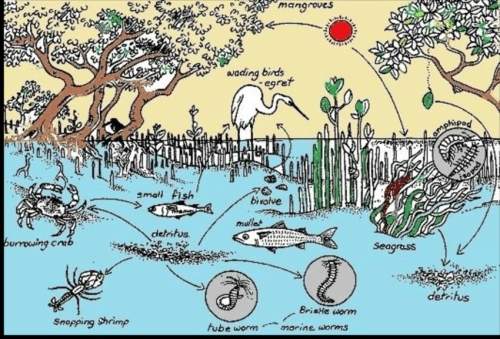
Please help I just need the drawings of the data and diagram. giving out 250 points
Model a low-gradient, low-velocity stream.
Read the scenario.
You are on a research trip to observe pronghorn in the prairie grasslands of Colorado. As you observe a herd grazing next to a nearby stream, you notice storm clouds moving in overhead and feel rain beginning to fall. How does the stream act right now upon the objects in it?
Analyze the scenario and characterize the slope of the stream, the amount of rainfall, and the terrain of the area.
Press the “Go to the model.” button to open the modeling tool.
You can always return to the scenario by clicking the “?” button in the top-right corner.
On the left panel, choose the description for each parameter that would
correctly model the scenario.
Press the “Check” button.
If all your descriptions are correct, proceed to step f.
If your descriptions are not all correct, analyze the scenario again and correct your descriptions. Click on the “Check” button. Do this step until all descriptions are correct. Then proceed to step f.
Observe what happens to the sand and pebbles in the stream.
When ready, press the “Pause” button and write your observations in the space below Low-Gradient, Low-Velocity Stream in the Data section of this guide.
Draw what you see in Table A.
Proceed to the next activity.
Model a low-gradient, high-velocity stream.
Read the scenario.
As you continue to observe the pronghorn herd, the rainfall gradually increases until it is falling at a steady pace, causing the stream to flow more quickly. How does the stream act right now upon the objects in it?
Analyze the scenario and characterize the slope of the stream, the amount of rainfall, and the terrain of the area.
Press the “Go to the model.” button to open the modeling tool. You can always return to the scenario by clicking the “?” button in the top-right corner.
On the left panel, choose the description for each parameter that would correctly model the scenario.
Press the “Check” button.
If all your descriptions are correct, proceed to step f.
If your descriptions are not all correct, analyze the scenario again and correct your descriptions. Press the “Check” button. Do this step until all descriptions are correct. Then proceed to step f.
Observe what happens to the sand and pebbles in the stream. Compare the erosion of sediment in this scenario and the erosion of sediment in the Low-Gradient, Low-Velocity Stream scenario.
When ready, press the “Pause” button and write your observations in the space below Low-Gradient, High-Velocity Stream in the Data section of this guide.
Draw what you see in Table B in the Data section of this guide.
Proceed to the next activity.
Model a high-gradient, low-velocity stream.
Read the scenario.
You make a second research trip to observe pronghorn in the Colorado Rockies. You are next to a steadily flowing river, observing a local herd, when you start to feel raindrops fall from overhead. How does the river act right now upon the objects in it?
Analyze the scenario and characterize the slope of the stream, the amount of rainfall, and the terrain of the area.
Press the “Go to the model.” button to open the modeling tool. You can always return to the scenario by clicking the “?” button in the top-right corner.
On the left panel, choose the description for each parameter that would correctly model the scenario.
Press the “Check” button.
If all your descriptions are correct, proceed to step f.
If your descriptions are not all correct, analyze the scenario again and correct your descriptions. Press the “Check” button. Do this step until all descriptions are correct. Then proceed to step f.
Observe what happens to the sand, pebbles, and rocks in the stream. Compare the erosion of sediment in this scenario and the erosion of sediment in the Low-Gradient, Low-Velocity Stream scenario.
When ready, press the “Pause” button and write your observations in the space below High-Gradient, Low-Velocity Stream in the Data section of this guide.
Draw what you see in Table С in the Data section of this guide.
Proceed to the next activity.

Answers: 1
Another question on Biology

Biology, 21.06.2019 23:30
If you have a difficult time knowing where your hand is without looking at it you may be having a problem with your what ?
Answers: 1

Biology, 22.06.2019 11:30
What is the process by which biological parents pass traits such as hair type or eye color to their children
Answers: 1


You know the right answer?
Please help I just need the drawings of the data and diagram. giving out 250 points
Model a low-gr...
Questions



History, 03.03.2021 20:40






Mathematics, 03.03.2021 20:40

Mathematics, 03.03.2021 20:40

Mathematics, 03.03.2021 20:40

Mathematics, 03.03.2021 20:40


History, 03.03.2021 20:40

Mathematics, 03.03.2021 20:40



Mathematics, 03.03.2021 20:40

Mathematics, 03.03.2021 20:40

Biology, 03.03.2021 20:40




